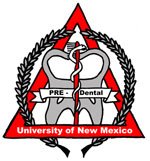
The New York Times
Printer Friendly Format Sponsored By
November 15, 2007
Red Laser Puts Tooth Decay in a New Light
By PETER JARET
THE next time your dentist tells you to open wide, consider this: dentists fail to accurately diagnose cavities 20 to 30 percent of the time.
“Especially in the pits and fissures on the surfaces of molars, it’s easy to miss early signs of tooth decay,” said Dr. Howard Strassler, a professor and the director of restorative dentistry at the University of Maryland Dental School. “And sometimes what you think is a cavity isn’t.”
Ouch.
The widespread use of fluoride, which hardens the enamel surface of teeth, has dramatically reduced tooth decay nationwide.
But it has also made detecting cavities trickier. The harder enamel is, the more difficult it is for dentists to detect small hidden cavities by poking into suspicious-looking areas with the sharp tip of an explorer, the metal tool traditionally used for diagnosis.
Now thousands of dentists are getting help from a device called Diagnodent, which shines new light on easy-to-miss cavities. The hand-held instrument uses a red laser to penetrate the outer layer of teeth. By measuring the way light reflects back, Diagnodent detects signs of decay, but is reassuringly gentle.
Diagnodent is used by an estimated 20,000 dentists in the United States, since its approval by the Food and Drug Administration in 2000, according to the KaVo Dental Corporation, the manufacturer.
“It has become a significant piece of equipment in many areas of dentistry,” said Dr. Kenneth Malament, a clinical professor who specializes in aesthetic and reconstructive dentistry at Tufts University. “People who have it use it every day.”
Some studies have shown it significantly improves cavity detection. “The great thing is that we can pick up cavities when we visually have no evidence,” Dr. Malament explained. “By catching them early, we can treat them before there’s much damage.”
The popular device has its limitations, though. It doesn’t work on teeth that already have fillings. And it occasionally makes mistakes.
The most serious problem is a false positive reading, which indicates decay where there isn’t any.
“I tell dental students that Diagnodent shouldn’t be used as a license to drill,” said Dr. Masatoshi Ando, an assistant professor at the Indiana University School of Dentistry. “It’s useful as a second opinion.” But dentists still need to do a careful visual inspection and poke around with their explorers, he warned.
Copyright 2007 The New York Times Company

No comments:
Post a Comment